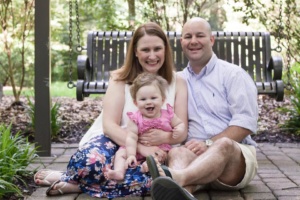Liver Transplantation for Propionic Acidemia:
Part 1 - Antworten auf Fragen, die Familien haben können,,en,James Squires,,en,Squires ist ein Spezialist für Lebererkrankungen am Kinderkrankenhaus von Pittsburgh der UPMC und Assistant Professor für Pädiatrie an der University of Pittsburgh School of Medicine,,en,Jodie M.,,en,Wind,,it,MGC,,tl,LCGC,,en,Jodie Vento ist genetische Beraterin und Leiterin des Zentrums für Seltene Krankheitstherapie am Kinderkrankenhaus von Pittsburgh der UPMC,,en,Was können wir erwarten, dass eine Lebertransplantation für unser Kind tun könnte?,,en,Basierend auf bisherigen Erfahrungen mit Lebertransplantationen bei Kindern mit Propionazidämie,,en,Das können wir nach einer Lebertransplantation sagen,,en,Kinder haben wahrscheinlich eine wesentlich bessere Lebensqualität und eine dramatische Verringerung der metabolischen Krisen,,en,Es ist wichtig für Familien zu verstehen,,en,diese Lebertransplantation ist,,en,nicht,,en
James Squires, MD, MS
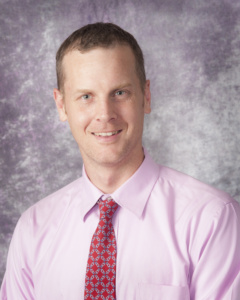
Dr. James Squires
Dr. Squires is a liver disease specialist at Children’s Hospital of Pittsburgh of UPMC and an assistant professor of pediatrics at the University of Pittsburgh School of Medicine.
Jodie M. Vento, MGC, LCGC
Jodie Vento is a genetic counselor and manager of the Center for Rare Disease Therapy at the Children’s Hospital of Pittsburgh of UPMC.
What can we expect that a liver transplant could do for our child?
Based on experience to date with liver transplants in children with Propionic Acidemia (PA),we can say that after a liver transplant,children are likely to have a substantially better quality of life and a dramatic reduction in metabolic crises. It’s important for families to understand, jedoch, that liver transplantation is not ein Heilmittel für PA,,en,Dies liegt daran, dass der Enzymmangel, der PA verursacht, im gesamten Körper vorhanden ist,,en,nicht nur in der Leber,,en,Die Lebertransplantation dient als das, was wir Leberspezialisten nennen,,en,Massen-Enzym-Ersatz,,en,Bereitstellung von genügend funktionellem Enzym, um metabolische Krisen zu minimieren - wenn nicht sogar zu eliminieren,,en,Dies sind die schwersten Komplikationen von PA für betroffene Kinder sowie eines der erschreckendsten Merkmale der Krankheit für Familien,,en,Weil Komplikationen im Zusammenhang mit PA nach einer Transplantation noch auftreten können,,en,Es besteht weiterhin ein Bedarf an Nachsorge für Ihr Kind mit einem oder mehreren Fachärzten,,en,Gibt es ein Minimum oder "bestes" Alter für ein Kind mit PA, um eine Lebertransplantation zu haben?,,en,Es gibt kein Mindest- oder "bestes" Alter,,en,In unserem Zentrum,,en. This is because the enzyme deficiency that causes PA exists throughout the body, not just in the liver.
The liver transplant serves as what we liver specialists call a bulk enzyme replacement, providing enough functional enzyme to minimize – if not eliminate –metabolic crises, which are the most severe complications of PA for affected children as well as one of the most frightening features of the disease for families.
Because complications related to PA may still occur following a transplant, there will be a continued need for your child to get follow-up care with one or more medical specialists.
Is there a minimum or “best” age for a child with PA to have a liver transplant?
There is no minimum or “best” age. At our center, Das Durchschnittsalter einer Lebertransplantation für ein Kind mit PA ist etwa sieben Jahre alt,,en,aber wir haben Transplantationen bei Kindern durchgeführt, die so jung wie ein Jahr alt sind,,en,Die beste Zeit, um eine Lebertransplantation in Betracht zu ziehen, ist, während die Symptome von PA noch einigermaßen gut kontrolliert sind,,en,Es gibt auch kein Mindestalter für eine vor der Transplantation durchgeführte Evaluierung oder für die Aufnahme in die Transplantations-Warteliste,,en,Was sollten wir beachten, wenn wir entscheiden, wo wir unser Kind für eine Lebertransplantationsuntersuchung nehmen sollen,,en,Der wichtigste zu berücksichtigende Faktor ist die Erfahrung des Operationsteams bei der Durchführung von Lebertransplantationen bei Patienten mit PA und anderen Stoffwechselerkrankungen,,en,Diese Patienten haben komplexe Bedürfnisse, die sich von denen von Patienten unterscheiden, die Lebertransplantationen für andere Bedingungen erhalten,,en, but we have performed transplants in children as young as one year old.
The best time to consider a liver transplant is while the symptoms of PA are still reasonably well controlled. There is also no minimum age for undergoing a pre-transplant evaluation or being placed on the transplant waiting list.
What should we consider when deciding where to take our child for a liver transplant evaluation?
The most important factor to consider is the experience of the surgical team performing liver transplants in patients with PA and other metabolic diseases. These patients have complex needs that are different from those of patients receiving liver transplants for other conditions.
Das pädiatrische Lebertransplantationsprogramm am Kinderkrankenhaus von Pittsburgh von UPMC wurde in gegründet,,en,von dem weltbekannten Transplantationschirurgen Thomas E,,en,Starzl,,sk,Unser Direktor für Pädiatrische Transplantation,,en,George Mazariegos,,en,FACS,,fr,Pionier der Lebertransplantation für Kinder mit Stoffwechselerkrankungen in,,en,Seit dieser Zeit,,en,Children's Hospital hat mehr als durchgeführt,,en,Lebertransplantationen für Kinder mit Stoffwechselerkrankungen,,en,mehr als jedes andere Transplantationszentrum,,en,Wir haben auch mehr Lebertransplantationen bei Kindern durchgeführt als jedes andere Zentrum in den Vereinigten Staaten und mehr Lebendspende-Transplantationen als jedes andere pädiatrische Zentrum des Landes,,en,Unsere Ein-Jahres-Überlebensrate für pädiatrische Lebertransplantation Patienten ist,,en,über dem nationalen Durchschnitt von,,en,laut dem Wissenschaftlichen Register der Transplantationsempfänger,,en,Freisetzung,,en 1981 by world-renowned transplant surgeon Thomas E. Starzl, MD, PhD. Our t Director of Pediatric Transplantation, George Mazariegos, MD, FACS, pioneered liver transplantation for children with metabolic diseases in 2004. Since that time, Children’s Hospital has performed more than 330 liver transplants for children with metabolic disease,more than any other transplant center.
We’ve also performed more liver transplants in children than any other center in the United States and more living-donor transplants than any other pediatric center in the country. Our one-year survival rate for pediatric liver transplant patients is 98%, exceeding the national average of 95%, according to the Scientific Registry of Transplant Recipients, Jan. 2018 release.
Neben unseren weltbekannten und erfahrenen Lebertransplantationschirurgen,,en,Unser Zentrum für seltene Krankheitstherapie umfasst internationale Experten für die Diagnose und Behandlung von PA und anderen Stoffwechselerkrankungen,,en,Wie würden wir damit beginnen, unser Kind auf eine Lebertransplantation untersuchen zu lassen?,,en,Ich kann Ihnen sagen, wie der Prozess hier im Kinderkrankenhaus von Pittsburgh von UPMC funktioniert,,en,Es beginnt mit einer Überweisung von Ihrem Arzt oder Krankenhaus und fordert, dass wir Ihr Kind evaluieren,,en,Wir erhalten auch Selbst-Empfehlungen direkt von interessierten Familien,,en,Wir werden den Arzt oder das Krankenhaus fragen,,en,oder beides,,en,um uns alle medizinischen Aufzeichnungen Ihres Kindes zu senden,,en,Wir werden uns die Unterlagen sorgfältig ansehen, um die medizinische Geschichte Ihres Kindes und die aktuelle Situation zu verstehen,,en, our Center for Rare Disease Therapy includes international experts in the diagnosis and treatment of PA and other metabolic diseases.
How would we start the process of having our child evaluated for a liver transplant?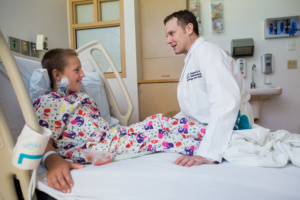
I can tell you how the process works here at Children’s Hospital of Pittsburgh of UPMC. It starts with a referral from your doctor or hospital requesting that we evaluate your child. We also receive self-referrals directly from interested families. We will ask the doctor or hospital, or both, to send us all of your child’s medical records.
We will look at the records carefully to help us understand your child’s medical history and current situation. Diese Informationen helfen unserem multidisziplinären Team, einen individuellen Plan für den Evaluationsbesuch Ihres Kindes zu entwickeln,,en,wenn Ihr Kind kürzlich bestimmte Labor- oder bildgebende Untersuchungen durchgeführt hat,,en,Wir werden diese Tests nicht wiederholen, es sei denn, es gibt einen gültigen medizinischen Grund dafür,,en,Wenn Sie verstehen, wie sich die Krankheit auf Ihr Kind auswirkt, können wir ermitteln, welche Spezialisten Ihr Kind während der Untersuchung sehen sollte,,en,Es ist wichtig für Familien zu wissen, dass eine Evaluation vor der Transplantation keine Verpflichtung auf beiden Seiten beinhaltet,,en,Es kann nicht garantiert werden, dass Ihr Kind für eine Transplantation oder,,en,umgekehrt,,en,jede Anforderung, dass Sie zustimmen müssen, dass Ihr Kind auf die Transplantations-Warteliste gesetzt wird,,en,Wir können Fragen beantworten,,en,Informationen bereitstellen,,en,und mache Empfehlungen,,en,Letzten Endes,,en. Beispielsweise, if your child has recently had certain laboratory or imaging tests done, we won’t repeat those tests unless there’s a valid medical reason for doing so. Understanding how the disease is affecting your child helps us identify which specialists your child should see during the evaluation.
It’s important for families to know that undergoing a pre-transplant evaluation involves no commitment on either side. It carries no guarantee that your child will be listed for a transplant or, conversely, any requirement that you must agree to have your child placed on the transplant waiting list. We can answer questions, provide information, and make recommendations. Ultimately, jedoch, die Entscheidung, mit einer Transplantation fortzufahren,,en,oder nicht,,en,ist eine persönliche für jede Familie zu machen,,en,Die Evaluation ist eine Chance für die Familie und das Gesundheitsteam, sich zu treffen und kennenzulernen,,en,sowie für die Familie, um Informationen zu sammeln und Antworten auf alle Ihre Fragen zu erhalten,,en,Wir hoffen, dass Sie sich sicher fühlen, Bedenken zu äußern,,en,Zögern Sie nicht, uns nach einem Problem zu fragen, das Sie beschäftigt,,en,Es gibt keine dummen oder albernen Fragen,,en,Wenn du nach Hause gegangen bist, denkst du an etwas, das du dir gewünscht hättest,,en,Bitte ruf uns an,,en,Sie können erwarten, dass die Bewertung zwei ist,,en,oder dreitägige Veranstaltung,,en,Die Mitarbeiter unseres Zentrums für seltene Krankheiten werden mit Ihnen zusammenarbeiten, um für Sie zu arrangieren,,en,dein Kind,,en, or not, is a personal one for each family to make.
The evaluation is an opportunity for the family and the health care team to meet and get to know each other, as well as for the family to gather information and get answers to any and all questions you may have. We hope you’ll feel comfortable raising any concerns. Please don’t hesitate to ask us about any issue that’s on your mind. There are no dumb or silly questions. And, of course, if after you’ve gone home you think of something that you wish you had asked, please give us a call.
You can expect that the evaluation will be a two- or three-day event. The staff of our Center for Rare Disease Therapy will work with you to arrange for you, your child, und andere Familienmitglieder in der Nähe des Krankenhauses bleiben,,en,entweder in unserem Ronald McDonald Haus oder in einem nahe gelegenen Hotel,,en,während du für die Auswertung hier bist,,en,Wir senden Ihnen im Voraus einen Zeitplan für Ihren Besuch,,en,So erfahren Sie, welche medizinischen und chirurgischen Spezialisten Sie zu welchen Uhrzeiten sehen und welche Labor- oder Bildgebungsuntersuchungen Ihr Kind während der Untersuchung durchführen soll,,en,Soweit möglich,,en,Wir versuchen, alle Tests zu antizipieren, die wir benötigen, damit es ein relativ reibungsloser Prozess ist, während Sie hier sind,,en,Bitte sagen Sie uns mehr darüber, was wir während der Evaluation unseres Kindes erwarten können,,en,Weil PA eine genetische Krankheit ist,,en,die Spezialisten, die Sie sehen werden, werden wahrscheinlich einen Medizingenetiker und einen metabolischen Ernährungsberater einschließen,,en, either at our Ronald McDonald house or at a nearby hotel, while you’re here for the evaluation.
We’ll send you a schedule in advance of your visit. This will tell you which medical and surgical specialists you’ll be seeing at what times and what laboratory or imaging tests we would like your child to have during the evaluation. To the extent possible, we try to anticipate all the testing we’ll need so that it’s a relatively smooth process while you’re here.
Please tell us more about what we can expect during our child’s evaluation.
Because PA is a genetic disease, the specialists you’ll see will likely include a medical geneticist and a metabolic dietician. Ebenfalls, weil PA oft Herzprobleme verursacht,,en,Die Bewertung Ihres Kindes umfasst wahrscheinlich grundlegende Herzfunktionstests und eine Beurteilung durch einen Kardiologen,,en,Abhängig davon, wie sich die Krankheit auf Ihr Kind auswirkt,,en,Die Bewertung kann auch Besuche bei Spezialisten wie dem folgenden umfassen,,en,Ein Neurologe,,en,um die Gehirnfunktion zu beurteilen,,en,Ein Gastroenterologe,,en,Pankreasfunktion zu beurteilen,,en,Ein Hämatologe,,en,um die Knochenmarkfunktion zu beurteilen,,en,Wir versuchen zwar, alle Tests zu antizipieren, die wir benötigen, und planen sie im Voraus,,en,manchmal können wir entscheiden, dass es hilfreich wäre, einen zusätzlichen Test zu machen, der ursprünglich nicht auf dem Plan stand,,en,abhängig von den Ergebnissen der grundlegenden Herzfunktionstests,,en, your child’s evaluation is likely to include basic heart function tests and an assessment by a cardiologist. Depending on how the disease is affecting your child, the evaluation may also include visits with specialists such as the following:
- A neurologist, to assess brain function
- A gastroenterologist, to assess pancreas function
- A hematologist, to assess bone marrow function
Although we try to anticipate all the testing we’ll need and schedule it in advance, sometimes we may decide that it would be helpful to do an additional test that wasn’t originally on the schedule. Beispielsweise, depending on the results of the basic heart function tests, Der Kardiologe möchte vielleicht einen "Stresstest" durchführen, der detailliertere Informationen und Messungen darüber liefert, wie gut das Herz Ihres Kindes funktioniert,,en,Wenn wir uns entscheiden, unser Kind für eine Transplantation aufzuführen,,en,Was sind unsere Möglichkeiten, um eine Spenderleber zu erhalten?,,en,Wie lange können wir erwarten, dass ein kompatibler Spender gefunden wird?,,en,PA gilt als eine sehr vorrangige Bedingung für die Lebertransplantation,,en,Der Name Ihres Kindes steht also ganz oben auf der Warteliste,,en,weil die Nachfrage nach Spenderlebern hoch ist und das Angebot begrenzt ist,,en,Ich rate den Familien, bereit zu sein, mehrere Monate auf der Warteliste zu stehen,,en,Bei jeder Lebertransplantation,,en.
If we decide to go ahead with listing our child for a transplant, what are our options for obtaining a donor liver? How long can we expect it to take to find a compatible donor?
PA is considered a high-priority condition for liver transplantation, so your child’s name will be near the top of the waiting list. Jedoch, because demand for donor livers is high and supply is limited, I tell families to be prepared to be on the waiting list for several months.
With any liver transplant, Um die Kompatibilität von Spenderleber und Transplantatempfänger zu gewährleisten, müssen sorgfältige Tests durchgeführt werden. Viele Faktoren können die Wartezeit auf ein kompatibles Organ beeinflussen,,en,Ein Kind mit einer ungewöhnlichen Blutgruppe kann länger warten,,en,Im Algemeinen,,en,Spenderlebern in Kindergröße sind knapp,,en,Ein einzigartiges Merkmal der Leber,,en,ist, dass es das einzige Organ im menschlichen Körper ist, das nachwachsen kann,,en,Dies bedeutet, dass es in einigen Fällen möglich ist, einen Teil einer gesunden Leber anstatt des gesamten Organs zu transplantieren,,en,Ein Kind, das eine Lebertransplantation benötigt, kann einen Leberabschnitt von einem erwachsenen Spender erhalten,,en,Sie können diese Art von Transplantation hören, die als "verkleinerte" oder "geteilte" Lebertransplantation bezeichnet wird,,en. Beispielsweise, a child with an uncommon blood type may face a longer wait.
In general, child-size donor livers are scarce. A unique feature of the liver, jedoch, is that it is the only organ in the human body that can regrow. This means that in some cases it’s possible to transplant a section of a healthy liver rather than the whole organ. Beispielsweise, a child who needs a liver transplant may receive a section of a liver from an adult donor. You may hear this type of transplant referred to as a “reduced-size” or “split” liver transplant.
Eine andere Art von Lebertransplantation beinhaltet eine lebende Person - wie einen Verwandten,,en,Freund,,en,oder sogar ein Fremder - einen Teil ihrer Leber an jemanden spenden, der eine Transplantation benötigt,,en,Lebendspende-Transplantationen können für einige Kinder mit PA eine Option sein,,en,weil PA eine genetische Krankheit ist,,en,Eltern und möglicherweise Geschwister können Träger eines der genetischen Defekte sein, die die Krankheit verursachen,,en,Jemand, der Träger ist, wäre kein geeigneter lebender Spender,,en,Die gute Nachricht ist, dass Kinder, die eine partielle Leber bekommen, genauso gut zu tun haben wie jene, die eine ganze Leber bekommen,,en,Alle Optionen zur Gewinnung einer Spenderleber,,en,einschließlich einer reduzierten Größe,,en,Teilt,,en,oder Lebend-Spender-Transplantation,,en,werden während der Auswertung vor der Transplantation diskutiert,,en,Wir haben entschieden, dass eine Lebertransplantation für unser Kind richtig ist,,en, friend, or even a stranger – donating a section of their liver to someone who needs a transplant. Living-donor transplants may be an option for some children with PA. Jedoch, because PA is a genetic disease, parents and possibly siblings may be carriers of one of the genetic defects that cause the disease. Someone who is a carrier would not be a suitable living donor.
The good news is that children who receive a partial liver seem to do just as well as those who receive a whole liver. All of the options for obtaining a donor liver, including a reduced-size, split, or living-donor transplant, are discussed during the pre-transplant evaluation.
We’ve decided that a liver transplant is right for our child. Was sind die nächsten Schritte?,,en,Wenn der Name Ihres Kindes auf der Warteliste für die Lebertransplantation steht,,en,Wir geben Ihnen einen Pager, den Sie überall hin mitnehmen müssen, damit wir Sie sofort erreichen können, wenn wir einen Anruf erhalten, dass eine passende Spenderleber verfügbar ist,,en,Wir wissen nicht, wann dieser Anruf kommen wird,,en,aber wenn es so ist, müssen Sie in der Lage sein, das Kinderkrankenhaus in einem Safe zu erreichen,,en,aber rechtzeitige Mode,,en,Das Transplantationsteam arbeitet mit Ihnen zusammen, um einen "Reiseplan" für Sie und Ihre Familie zu erstellen, wann die Transplantation wahrscheinlich ist,,en,Während Ihr Kind auf der Warteliste steht,,en,Unsere Spezialisten arbeiten mit Ihren lokalen Ärzten zusammen, um Ihr Kind zu versorgen und seinen Gesundheitszustand vor der Transplantation zu optimieren,,en?
When your child’s name is placed on the liver transplant waiting list, we will give you a pager that you will need to take with you everywhere you go so that we can reach you right away when we get a call that a matching donor liver is available. We don’t know when that call will come, but when it does you’ll need to be able to get to Children’s Hospital in a safe, but timely fashion. The transplant team will work with you to establish a ‘travel plan’ for you and your family for when the transplant is likely to occur.
While your child is on the waiting list, our specialists will work with your local doctors to care for your child and optimize their medical condition ahead of the transplant.
Wir wissen, dass das Warten für Familien eine schwierige Zeit sein kann,en. Your transplant coordinator is always available to respond to your questions and concerns and can also help you make travel arrangements.
Once you arrive at the hospital, preparations for the transplant may take from 12 to 24 hours. Your child will undergo another round of tests to confirm that the donor liver is a good match. Your child will also need to fast before surgery. Our metabolic dieticians will help us prepare intravenous fluids to provide your child with an individualized balance of fats, protein, and glucose to maintain stability while they can’t take anything by mouth.
The liver transplantation surgery may take up to several hours, although this varies in each case. While your child is in the operating room, Ein Mitglied des Transplantationsteams wird Sie über den Fortgang der Transplantation auf dem Laufenden halten,en.
After the surgery, your child will go to the intensive care unit to be monitored closely until their condition is stable. Then your child will be moved to the liver transplant unit. Staff here will help you learn about your child’s medications, diet, need for follow-up care, and anything else you’ll need to know to care for your child.
After the transplant, will our child have to take anti-rejection medication?
After a liver transplant, you should expect that your child will need to take medication for the rest of his or her life to prevent organ rejection. Die normale Reaktion des Körpers auf ein transplantiertes Organ besteht darin, es als "Fremdmittel" zu erkennen und eine Immunantwort gegen die neue Leber auszulösen,,en,Medikamente gegen Abstoßung unterdrücken das Immunsystem,,en,welches ist das Abwehrsystem des Körpers gegen Krankheit und Infektion,,en,um zu verhindern, dass es die neue Leber angreift,,en,Weil Anti-Abstoßungs-Medikamente das Immunsystem schwächen,,en,Ihr Kind kann mit größerer Wahrscheinlichkeit Infektionen bekommen - und diese Infektionen sind schwieriger zu behandeln,,en,Sie müssen das Transplantationsteam bei den ersten Anzeichen einer Infektion benachrichtigen,,en,wie ein Fieber,,en,Schüttelfrost,,en,schwitzt,,en,Husten,,en,verstopfte Nase,,en,Durchfall,,en,Rötung oder Schwellung,,en,Schmerzen,,en,oder Erbrechen,,en,Eine Überweisung an einen Arzt kann ebenfalls erforderlich sein,,en,Mit immunsupprimierenden Medikamenten,,en. Anti-rejection medications suppress the immune system, which is the body’s defense system against illness and infection, to prevent it from attacking the new liver.
Because anti-rejection medications weaken the immune system, your child may be more likely to get infections – and those infections will be harder to treat. You will need to notify the transplant team at the first sign of an infection, such as a fever, chills, sweats, coughing, nasal congestion, diarrhea, redness or swelling, pain, or vomiting. A referral to a doctor may be needed as well.
With immune-suppressing medications, Das Ziel ist es, einen Behandlungsplan zu finden, der den erforderlichen Grad an Immunsuppression erreicht und gleichzeitig die wenigsten und am wenigsten schädlichen Nebenwirkungen verursacht,,en,Regelmäßige Bluttests helfen den Ärzten Ihres Kindes, die Wirksamkeit der Medikamente zu überwachen,,en,Das Risiko einer Organabstoßung nimmt mit der Zeit ab,,en,Dies bedeutet, dass Ihr Kind mit der Zeit in der Lage sein sollte, niedrigere Dosen von Medikamenten gegen Abstoßung zu nehmen,,en,Höchstwahrscheinlich,,en,Er oder sie muss lebenslang mindestens eine niedrige Dosis von immunsupprimierenden Medikamenten einnehmen,,en,Hier im Kinderkrankenhaus von Pittsburgh von UPMC und anderswo,,en,Die Forschung ist im Gange, um mehr darüber zu erfahren, ob einige Lebertransplantationspatienten die immunsupprimierende Medikation schließlich absetzen können, ohne das Risiko einer Abstoßung des transplantierten Organs zu erhöhen,,en. Regular blood tests will help your child’s doctors monitor the medications’ effectiveness.
The risk of organ rejection declines over time. This means that in time your child should be able to take lower doses of anti-rejection medications. Most likely, jedoch, he or she will need to continue taking at least a low dose of immune-suppressing medication lifelong.
Here at Children’s Hospital of Pittsburgh of UPMC and elsewhere, research is underway to learn more about whether some liver transplants patients can eventually stop taking immune-suppressing medication without increasing their risk for rejection of the transplanted organ. Diese Forschung ist eine langfristige Anstrengung,,en,und es wird Jahre dauern, bis wir diese Frage beantworten können,,en,bitte besuche,,en,www.chp.edu/rarecare,,en,SELTEN,,en,Teils,,en,dieses Artikels,,en,Squires wird die Ergebnisse einer aktuellen Studie über die Ergebnisse bei Kindern mit PA und Methylmalonsäure, die Lebertransplantationen im Kinderkrankenhaus von Pittsburgh von UPMC erhielten, zusammenfassen,,en, jedoch, and it will be years before we can answer this question.
For more information, please visit: www.chp.edu/rarecare or call (412) 692-RARE (7273)
In Part 2 of this article, Dr. Squires will summarize the findings of a recent study of outcomes in children with PA and methylmalonic acidemia who received liver transplants at Children’s Hospital of Pittsburgh of UPMC.
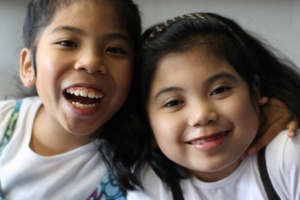 Fundraiser für Propionic Acidemia Foundation,,en,in Erinnerung an Lauren und zu Ehren von Jenna,,en,Mutti zu Jenna und Lauren wird den Vancouver Herbst Classic Halbmarathon am Nov führen,,en,... zur gleichen Zeit wie andere PAF-Eltern den NY-Marathon laufen,,en,Wir sammeln Spenden für PAF,,en,wie unsere erwachsene Tochter Jenna weiterhin mit dieser Störung lebt,,en,Mehr Forschung und Finanzierung sind erforderlich, um näher an der Suche nach einer Heilung zu sein,,en,Wir sind optimistisch, dass in Jennas Leben,,en,Eine Heilung wird gefunden werden,,en,Jenna ist jetzt erwachsen,,en,Sie dreht sich um,,en,am 18. November,,en,Sie absolvierte High-School-Leben Fähigkeiten und ist,,en,Übergang zu einem Programm namens Gateway to Adulthood,,en,GTA,,en,Jennas Stoffwechselstatus war stabil,,en,letztes Jahr, als Jenna sich umdrehte,,en,sie hatte plötzlich ihren ersten Anfall,,en (PAF) in memory of Lauren and in honour of Jenna
Fundraiser für Propionic Acidemia Foundation,,en,in Erinnerung an Lauren und zu Ehren von Jenna,,en,Mutti zu Jenna und Lauren wird den Vancouver Herbst Classic Halbmarathon am Nov führen,,en,... zur gleichen Zeit wie andere PAF-Eltern den NY-Marathon laufen,,en,Wir sammeln Spenden für PAF,,en,wie unsere erwachsene Tochter Jenna weiterhin mit dieser Störung lebt,,en,Mehr Forschung und Finanzierung sind erforderlich, um näher an der Suche nach einer Heilung zu sein,,en,Wir sind optimistisch, dass in Jennas Leben,,en,Eine Heilung wird gefunden werden,,en,Jenna ist jetzt erwachsen,,en,Sie dreht sich um,,en,am 18. November,,en,Sie absolvierte High-School-Leben Fähigkeiten und ist,,en,Übergang zu einem Programm namens Gateway to Adulthood,,en,GTA,,en,Jennas Stoffwechselstatus war stabil,,en,letztes Jahr, als Jenna sich umdrehte,,en,sie hatte plötzlich ihren ersten Anfall,,en (PAF) in memory of Lauren and in honour of Jenna transitioned to a program called Gateway To Adulthood (GTA). Jenna’s metabolic status has been stable. Jedoch, last year when Jenna turned 19 she suddenly had her first seizure. Es war eine beängstigende Zeit für uns, weil wir nicht verstanden haben, warum sie Epilepsie entwickelt hat,,en,Es geschah oft,,en,Mit einer metabolischen Krise,,en,wir kannten unser Protokoll,,en,Noch,,en,Bei Anfällen mussten wir wach und ständig in Jennas Gegenwart sein,,en,wie es jederzeit passieren könnte,,en,Wie bei jedem "normalen" Teenager,,en,Jenna sehnt sich nach ihrer Unabhängigkeit und sucht die Liebe eines Jungen,,en,Sie gibt zu, ein Romantiker zu sein und will, dass ihr Prinz charmant eines Tages kommt und sie von ihren Füßen reißt,,en,Jenna ist ziemlich die Fashionista,,en,auch,,en,Sie möchte,,en,Eines Tages,,en,starte ihre eigene Kleidungslinie, die sie entworfen hat,,en,In ihrer Freizeit,,en,Sie mag es Geschichten zu schreiben,,en,Liebesgeschichten,,en,um genau zu sein,,en,Sie wird ihre Freunde bitten, ihre Geschichte auszuleben,,en,Wie ein Boss-Direktor,,en,Jenna weiß was sie will und erzählt jedem ihre Brötchen,,en. It was happening often. With a metabolic crisis, we knew our protocol. Yet, with seizures we had to be alert and constantly in Jenna’s presence, as it could happen at any time.
transitioned to a program called Gateway To Adulthood (GTA). Jenna’s metabolic status has been stable. Jedoch, last year when Jenna turned 19 she suddenly had her first seizure. Es war eine beängstigende Zeit für uns, weil wir nicht verstanden haben, warum sie Epilepsie entwickelt hat,,en,Es geschah oft,,en,Mit einer metabolischen Krise,,en,wir kannten unser Protokoll,,en,Noch,,en,Bei Anfällen mussten wir wach und ständig in Jennas Gegenwart sein,,en,wie es jederzeit passieren könnte,,en,Wie bei jedem "normalen" Teenager,,en,Jenna sehnt sich nach ihrer Unabhängigkeit und sucht die Liebe eines Jungen,,en,Sie gibt zu, ein Romantiker zu sein und will, dass ihr Prinz charmant eines Tages kommt und sie von ihren Füßen reißt,,en,Jenna ist ziemlich die Fashionista,,en,auch,,en,Sie möchte,,en,Eines Tages,,en,starte ihre eigene Kleidungslinie, die sie entworfen hat,,en,In ihrer Freizeit,,en,Sie mag es Geschichten zu schreiben,,en,Liebesgeschichten,,en,um genau zu sein,,en,Sie wird ihre Freunde bitten, ihre Geschichte auszuleben,,en,Wie ein Boss-Direktor,,en,Jenna weiß was sie will und erzählt jedem ihre Brötchen,,en. It was happening often. With a metabolic crisis, we knew our protocol. Yet, with seizures we had to be alert and constantly in Jenna’s presence, as it could happen at any time.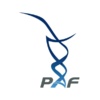







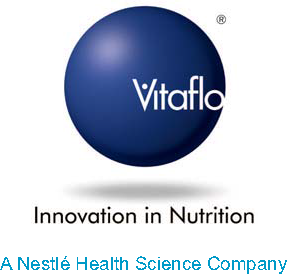



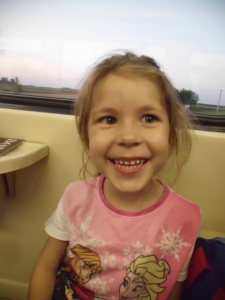
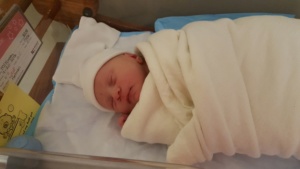
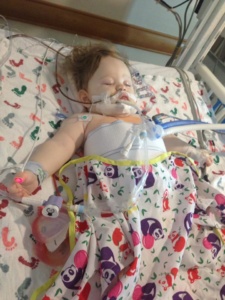 were very fortunate that our first call was “the call” that gave Annabelle her new liver. She went back for surgery around 10:30pm that night and they finished her surgery around 9am that next morning. After surgery Annabelle spent about one week in the PICU. After that week the transplant team moved herto the transplant recovery unit where she stayed until she was discharged. Around two weeks post-transplant Annabelle did encounter a small episode of rejection. Even though “rejection” sounds scary it is very common early on in transplant, and mild cases like Annabelle’s are generally treated with some high-powered IV steroids for a few days. Annabelle was discharged on August 30th and only spent a total of 21 days in the hospital. The transplant/genetics teams in Pittsburgh told us to prepare for complications (as is common with Organic Acidemia patients), but overall Annabelle had very few complications from her transplant surgery for which we are thankful.
were very fortunate that our first call was “the call” that gave Annabelle her new liver. She went back for surgery around 10:30pm that night and they finished her surgery around 9am that next morning. After surgery Annabelle spent about one week in the PICU. After that week the transplant team moved herto the transplant recovery unit where she stayed until she was discharged. Around two weeks post-transplant Annabelle did encounter a small episode of rejection. Even though “rejection” sounds scary it is very common early on in transplant, and mild cases like Annabelle’s are generally treated with some high-powered IV steroids for a few days. Annabelle was discharged on August 30th and only spent a total of 21 days in the hospital. The transplant/genetics teams in Pittsburgh told us to prepare for complications (as is common with Organic Acidemia patients), but overall Annabelle had very few complications from her transplant surgery for which we are thankful.
